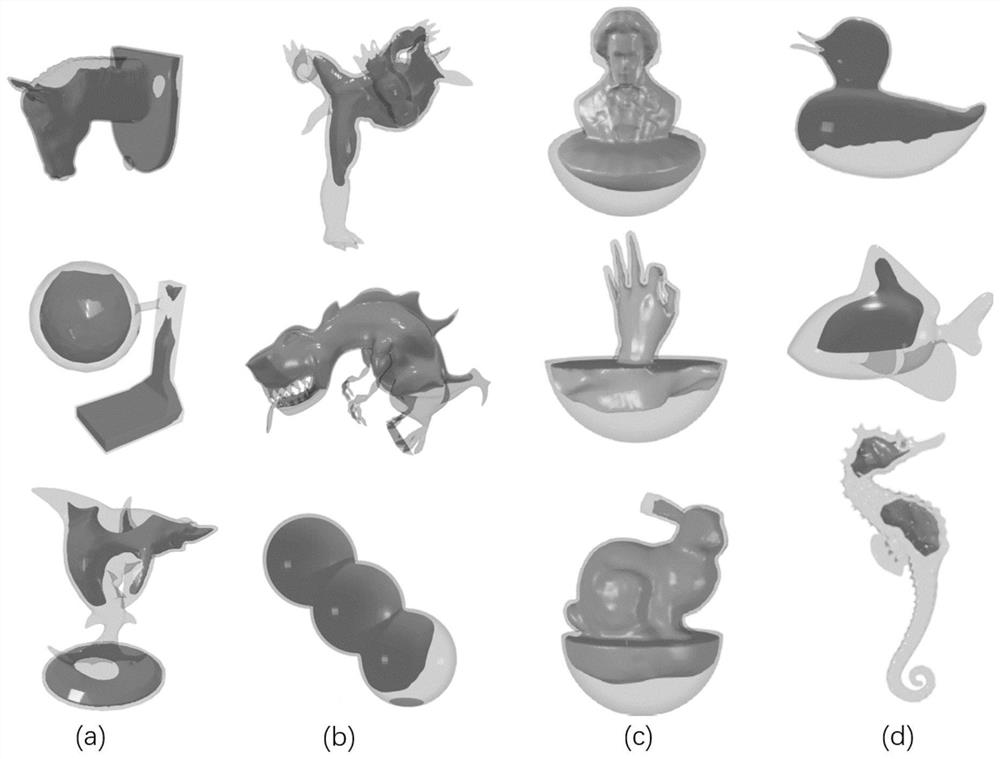A Lightweight Method of Digging Holes in 3D Models Based on Function Representation
A lightweight, model-based technology, applied in the field of hollow optimization of 3D printed objects, which can solve problems such as difficulty in accurately describing complex internal structures and unsmooth shape representation.
- Summary
- Abstract
- Description
- Claims
- Application Information
AI Technical Summary
Problems solved by technology
Method used
Image
Examples
Embodiment Construction
[0067] The specific implementation manners of the present invention will be further described below in conjunction with the accompanying drawings and technical solutions.
[0068] like figure 1 As shown, it is a schematic flow chart of the present invention. This embodiment takes standing stability as an example to illustrate the specific implementation of the present invention. It can be divided into three main steps: 3D model function representation with holes, problem model establishment, and optimization solution:
[0069] (1) 3D model function representation
[0070] In order to obtain the interpolation function representing the inner and outer surfaces of the model, it is necessary to find the weight {a i} and {b i} value. Take the function value f=1 of the external control point, the function value f=-1 of the internal control point, and the function value f=0 of the control point on the model surface. Use the RBF radial basis function to calculate the distance valu...
PUM
 Login to View More
Login to View More Abstract
Description
Claims
Application Information
 Login to View More
Login to View More - R&D
- Intellectual Property
- Life Sciences
- Materials
- Tech Scout
- Unparalleled Data Quality
- Higher Quality Content
- 60% Fewer Hallucinations
Browse by: Latest US Patents, China's latest patents, Technical Efficacy Thesaurus, Application Domain, Technology Topic, Popular Technical Reports.
© 2025 PatSnap. All rights reserved.Legal|Privacy policy|Modern Slavery Act Transparency Statement|Sitemap|About US| Contact US: help@patsnap.com



